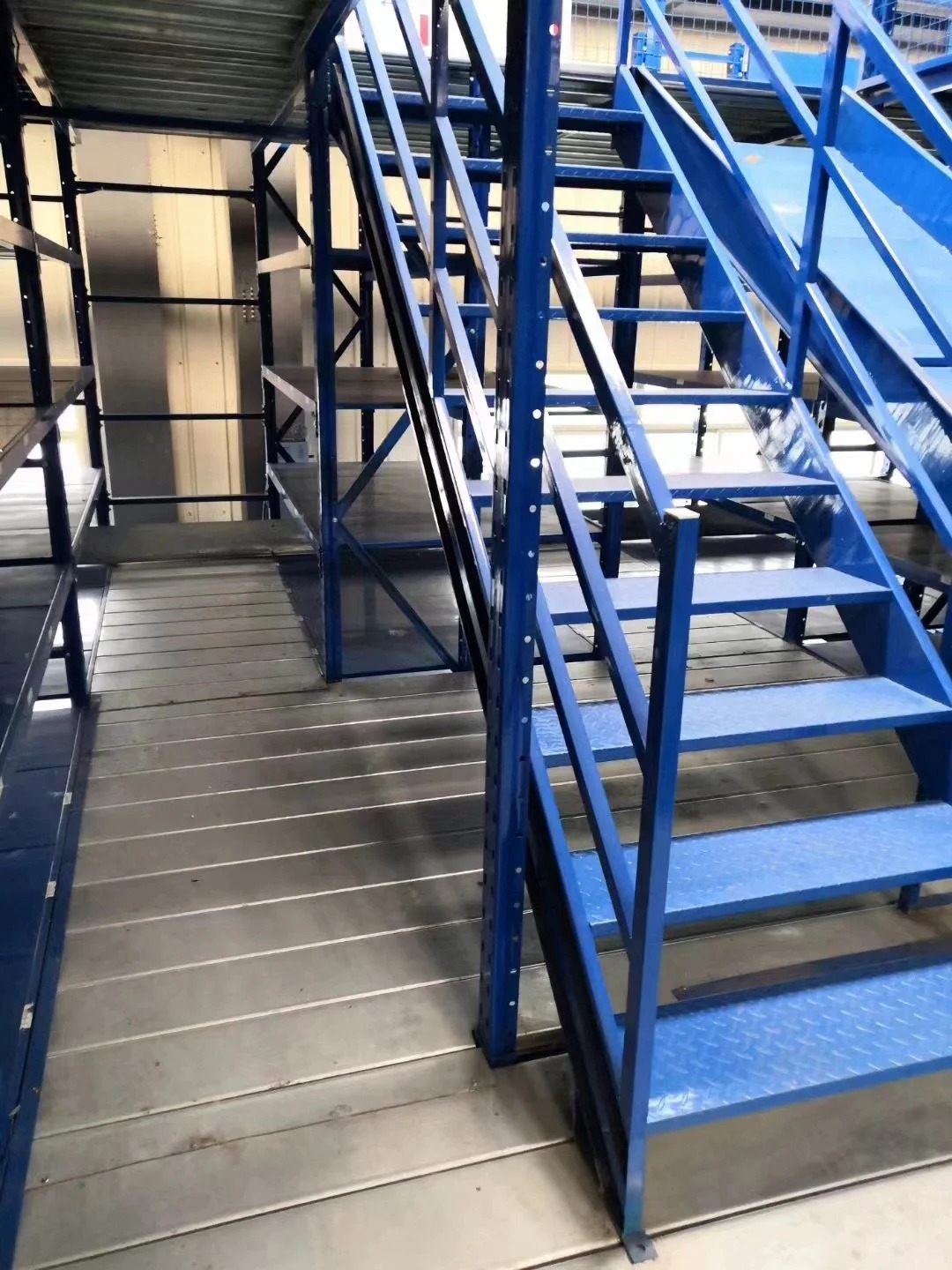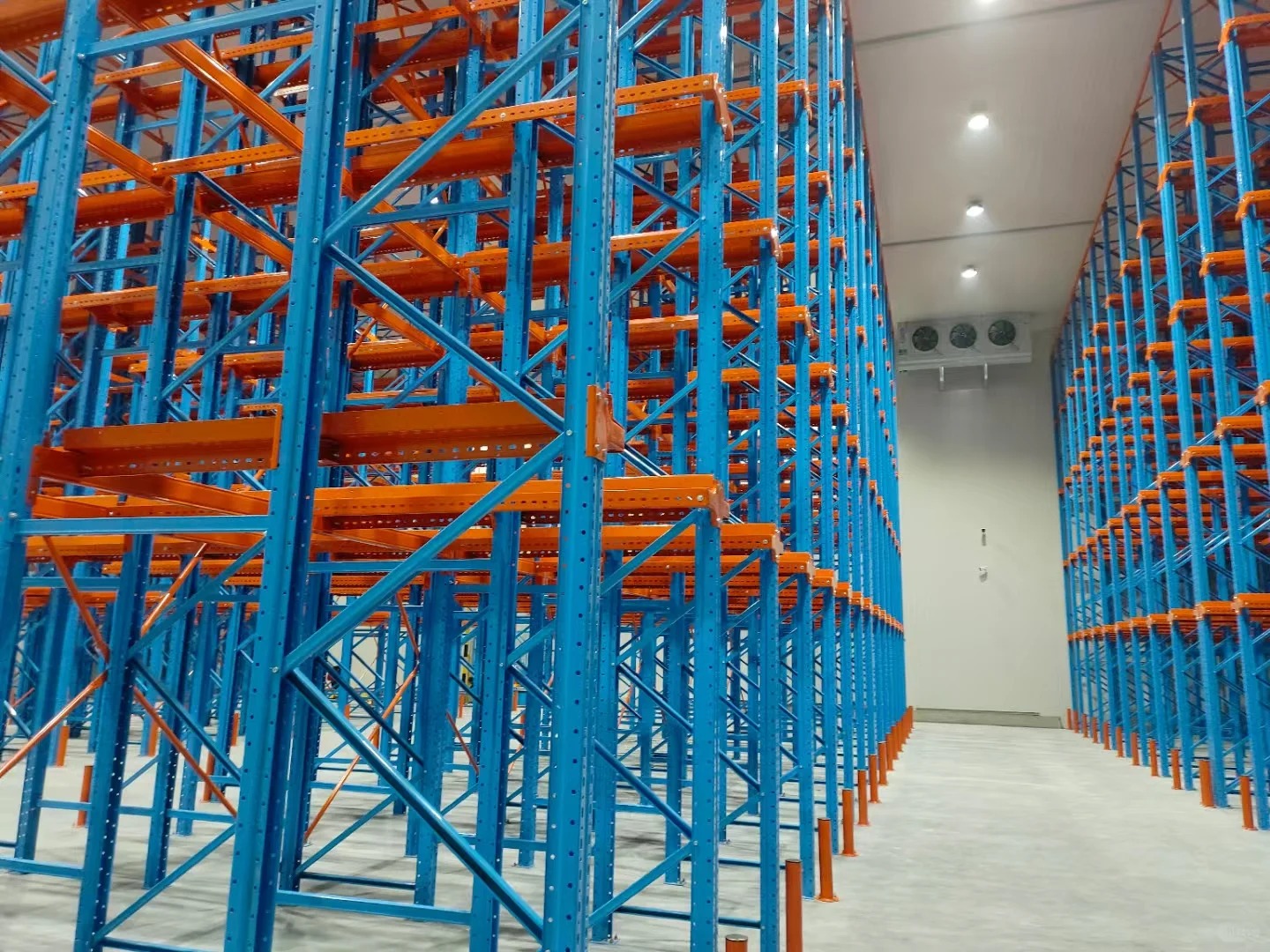In the high-stakes world of warehousing and logistics, where space is prime real estate and speed is paramount, the rack system for warehouse operations stands as the fundamental backbone. Far more than simple metal frameworks, these sophisticated structures are engineered solutions designed to optimize storage density, enhance accessibility, improve inventory control, and ensure workplace safety. Selecting and implementing the right rack system for warehouse needs is a critical strategic decision impacting everything from daily operations to long-term scalability. This article delves into the multifaceted world of warehouse racking, exploring its vital components and considerations.

Understanding the Critical Function of Warehouse Racking
At its core, a rack system for warehouse environments transforms vertical cube space into usable storage. Without it, warehouses would be limited to floor stacking, which is inefficient, unsafe, and severely restricts inventory visibility and access. Modern rack systems enable:
Vertical Storage: Utilizing the often-underused height of a warehouse building.
Organized Inventory: Providing designated locations for specific SKUs, improving traceability.
Material Handling Efficiency: Facilitating the use of forklifts, pallet jacks, and increasingly, automated retrieval systems.
Inventory Protection: Keeping goods off the floor, reducing damage from moisture, dirt, or impacts.
Safety: Structurally supporting loads properly, reducing collapse risks associated with floor stacking.
The choice of the optimal rack system for warehouse applications hinges on a deep understanding of the specific products handled, operational workflows, and future growth projections.
1. Navigating the Diverse Landscape of Rack System Types
No single rack system for warehouse fits every need. The variety is vast, each designed for specific applications, product characteristics, and picking strategies:
Selective Pallet Racking: The most common rack system for warehouse operations. It offers direct access to every pallet location, making it ideal for warehouses with a high SKU count and frequent access to all items. It provides excellent flexibility but utilizes floor space less densely than some alternatives. Variations include conventional narrow-aisle (requiring specialized forklifts) and very narrow aisle (VNA) racking for higher density.
Drive-In / Drive-Thru Racking: This rack system for warehouse storage prioritizes high-density storage for homogeneous products with lower turnover (LIFO - Last-In-First-Out for Drive-In; FIFO - First-In-First-Out for Drive-Thru). Forklifts drive directly into the rack structure lanes to place or retrieve pallets. It maximizes cube utilization but sacrifices selective access.
Pallet Flow Racking: An automated high-density rack system for warehouse environments utilizing inclined rails and gravity rollers. Loaded pallets enter from the loading (higher) end and flow forward to the unloading (lower) end, enforcing strict FIFO inventory rotation. Ideal for perishable goods or high-throughput homogeneous SKUs.
Push-Back Racking: Another high-density rack system for warehouse layouts, storing pallets 2-6 deep on nested carts riding on inclined rails. When a pallet is unloaded from the front, the next pallet automatically rolls forward. It offers better selectivity than Drive-In but less than Selective, providing a good balance of density and access (LIFO principle).
Cantilever Racking: The essential rack system for warehouse storage of long, bulky, or irregularly shaped items like lumber, piping, furniture, or rolls. It features strong vertical columns with projecting horizontal arms, eliminating front columns for unobstructed loading/unloading from the side.
Mobile Pallet Racking (Mobile Aisle): This innovative rack system for warehouse spaces mounts entire rack rows on powered mobile bases moving laterally on rails embedded in the floor. Only one aisle is open at a time, achieving extremely high storage density (up to 80% or more) while still offering selective access. Requires robust flooring and safety systems.
Mezzanine Systems: While not pure racking, mezzanines integrate seamlessly with a rack system for warehouse operations to create multi-level storage or operational platforms, effectively multiplying usable floor space. Racking is often installed on mezzanine levels.
2. Designing for Success: Key Considerations in Rack System Planning
Implementing an effective rack system for warehouse demands meticulous planning. Key design considerations include:
Product Characteristics: Weight, dimensions (pallet size, overhang), fragility, and handling requirements dictate beam length, load capacity, decking needs (wire mesh, pallet supports), and rack type. A rack system for warehouse storing heavy automotive parts differs vastly from one for light electronics.
Warehouse Infrastructure: Building clear height, floor flatness and strength, column spacing, door locations, and sprinkler systems impose significant constraints. Floor load capacity is critical for dense systems like Drive-In or Mobile Racking. The building's seismic zone also impacts design requirements.
Material Handling Equipment (MHE): The type and capabilities of forklifts (reach trucks, turret trucks, counterbalanced) determine aisle widths and rack heights. A rack system for warehouse designed for VNA trucks will have much narrower aisles than one for standard forklifts.
Operational Workflow: Picking strategies (case pick, pallet pick, piece pick), putaway processes, and desired throughput rates influence layout and rack selection. Flow racking suits high-volume FIFO, while selective is better for diverse SKU access.
Storage Density vs. Accessibility: This is the fundamental trade-off. High-density systems (Drive-In, Push-Back, Pallet Flow) maximize space but reduce immediate access to all pallets. Selective racking offers full accessibility but lower density. The optimal rack system for warehouse balances these based on inventory velocity.
Scalability and Flexibility: Design the rack system for warehouse operations with future growth in mind. Can it be easily reconfigured or expanded? Modular rack systems offer significant advantages here.

3. Prioritizing Safety: The Non-Negotiable Aspect of Warehouse Racking
Safety is paramount in any warehouse, and the rack system for warehouse storage is central to this. Key safety aspects include:
Structural Integrity & Load Capacity: Racks must be professionally engineered and installed to handle specified load weights, including seismic forces if applicable. Never exceed posted load capacities. Upright protectors (column guards) are essential.
Proper Installation: Precise leveling, anchoring, and bracing according to manufacturer specifications and engineering drawings are critical. Poor installation is a major cause of rack failure.
Regular Inspections: Implement a rigorous inspection program. Trained personnel should conduct regular visual inspections, with formal inspections by qualified rack inspectors (like SEMA approved inspectors in the UK, or RMI members in the US) at least annually, or after any impact. Document all inspections and repairs.
Damage Protocol: Establish clear procedures for reporting and immediately addressing any damage (bent beams, dented uprights, damaged base plates, missing/broken connections). Damaged components must be unloaded and repaired or replaced by qualified personnel using genuine manufacturer parts.
Safe Loading Practices: Ensure pallets are in good condition and properly sized. Loads must be centered on pallets and within the rack beam's length. Avoid overhang that can snag on equipment or other racks.
Clear Aisles and Signage: Maintain clear aisle widths for equipment maneuvering. Use clear signage indicating load capacities, rack heights, and aisle designations. Ensure adequate lighting throughout the racking area.
Operator Training: Forklift operators must be extensively trained on safe maneuvering within the rack system for warehouse aisles, including awareness of rack structures, load stability, and pedestrian safety. Collision avoidance systems (like rack post protectors, guard rails, and column guards) are highly recommended.
4. Integrating Technology: The Modern Rack System for Warehouse Automation
The modern rack system for warehouse is increasingly intertwined with technology, driving efficiency and accuracy to new levels:
Warehouse Management Systems (WMS): The digital brain. WMS software manages inventory locations within the rack system, optimizes putaway and picking paths, directs operators via RF scanners or voice-pick systems, and provides real-time inventory visibility. A WMS maximizes the utilization and efficiency of any rack system for warehouse.
Barcode/RFID Integration: Location labels on rack beams and barcodes/RFID tags on pallets enable precise tracking and verification of inventory movements within the rack structure, minimizing errors.
Automated Storage and Retrieval Systems (AS/RS): These sophisticated systems often incorporate specialized high-density rack structures (like unit-load AS/RS for pallets or mini-load for totes) with robotic cranes that automatically store and retrieve loads under WMS control. The rack system for warehouse automation forms the physical framework for these high-throughput solutions.
Pick-to-Light / Put-to-Light Systems: These systems use lights mounted on rack beams to visually guide operators to the exact pick or putaway location within the rack system for warehouse, significantly speeding up order fulfillment and reducing errors.
Inventory Drones: Drones equipped with cameras or RFID readers can autonomously fly through rack aisles, capturing inventory data or performing cycle counts at height, improving speed and safety compared to manual checks.
5. Evaluating Cost and Value: Beyond the Initial Purchase Price
Investing in a rack system for warehouse is a significant capital expenditure, but its value extends far beyond the initial hardware cost. Consider the total cost of ownership (TCO) and ROI:
System Components: Cost includes uprights, beams, braces, decking, row spacers, base plates, anchors, and optional accessories like wire decking, pallet supports, column guards, and end-of-aisle protectors.
Design and Engineering: Professional design services are crucial for safety and optimization. This includes layout drawings, load calculations, and seismic engineering if required.
Installation: Costs vary based on system complexity, size, and site conditions. Professional installation by certified technicians is essential for safety and warranty.
Material Handling Equipment (MHE): The chosen rack type dictates the required forklifts (standard, reach, turret, VNA), representing a major associated investment.
Operational Savings: The primary ROI driver. An optimized rack system for warehouse operations delivers value through:
Increased Storage Density: Storing more within the same footprint reduces the need for costly warehouse expansion or relocation.
Improved Labor Productivity: Faster picking, putaway, and inventory counts reduce labor hours.
Reduced Product Damage: Proper storage minimizes handling damage.
Enhanced Inventory Accuracy: Better organization leads to fewer errors and stockouts.
Improved Safety: Lower accident rates reduce costs associated with injuries, downtime, and damage.
Maintenance and Lifecycle: Factor in ongoing costs for regular inspections, potential repairs, and eventual system replacement or refurbishment. A well-maintained rack system for warehouse use can last decades.
The rack system for warehouse management is far more than static storage; it is a dynamic, strategic asset directly influencing operational efficiency, safety, scalability, and ultimately, profitability. From the fundamental selective rack to the high-tech AS/RS-integrated structures, the choice profoundly impacts how goods flow through the facility. Careful consideration of product needs, operational goals, infrastructure constraints, safety imperatives, and technological integration, coupled with professional design, quality installation, and diligent maintenance, is essential. Investing in the right rack system for warehouse requirements lays a robust foundation for a streamlined, safe, and successful logistics operation, capable of meeting the demands of today's fast-paced supply chains.







